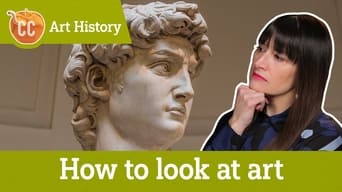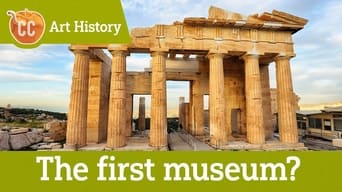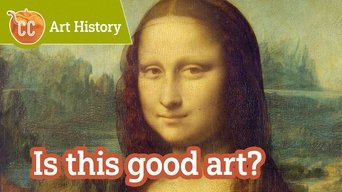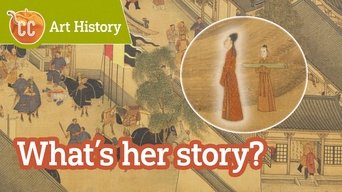Crash Course Art History (2024)
Crash Course Art History
2024
Over the course of 22 episodes, we’re going to learn about art history—the study of objects and images to understand their meaning and the people, places, and times they come from. Sarah Urist Green will equip you with a toolbox of terms to analyze and evaluate art, draw connections between different cultures and time periods, and ask big questions about how history gets made.
Seasons & Episode

Art history is much more than names, dates, and creepy babies. It helps us understand how history itself gets constructed and told. In this episode of Crash Course Art History, we’ll learn how interpreting artwork reveals connections among all of us, across cultures and across time.

How long do you typically look at an artwork, and what can you learn in that time? In this episode of Crash Course Art History, we’ll acquire a toolbox of terms to help us discover how all art is influenced by the time and place it was made in.

In this episode of Crash Course Art History, we’ll learn why museums are so much more than just collections of interesting and pretty objects. Their legacy includes everything from violence to theft, to, oddly enough, mermaid hands.

Michelangelo. Vincent Van Gogh. Pablo Picasso. The story of art history is told through the biographies of individual celebrity artists. In this episode of Crash Course Art History, we’ll learn about where the myth of the Great Artist comes from — and why it might be time for a new perspective.

In this episode of Crash Course Art History, we’ll keep digging into the myth of the Great Artist, with whether we can—or should—separate artists’ personal actions and beliefs from the art they create. Art historians are exploring new ways to think about artists’ relationship to their work and how to talk about controversial art.

What makes some art valuable enough to hang in museums? In this episode of Crash Course Art History, we’ll look at different ways we can figure out the value of art beyond the number on the price tag, and we’ll examine how culture, society, history, and storytelling influence how we evaluate artwork.

From cave paintings to public murals, humans have told stories with art for thousands of years. In this episode of Crash Course Art History, we discover that visual storytelling is elementally human — and so is competing over whose story is told.

From the Egyptian Book of the Dead to Tibetan Buddhist sand mandalas, humans have always reached for art to express religious ideas and impulses. In this episode, we’ll explore how concepts of the divine and spirituality intersect with the history of art.

From sunsets to double rainbows, nature’s full of beautiful things. So it’s not surprising that artists have found inspiration in Mother Nature for millennia. What is surprising is the wide variety of human concerns that nature art has been used to convey. In this episode of Crash Course Art History, we’ll learn about the ways artists use nature to make arguments about the world around us, and our place within it.

Art is often understood as a solitary act of personal expression. But art is also the basis for community from Alaska to Mali — and from gay rights advocates to Frida Kahlo appreciators. In this episode we’ll learn how community is created through art.

In this episode of Crash Course Art History, we’ll hold a mirror to our bodies…in art, anyway. We’ll learn what portraits and self-portraits can tell us about the people they represent and about artists who’ve used bodies to critique their societies.

How can the color “red” be a global commodity? How can the way a statue stands be a sign of cultural exchange? In this episode of Crash Course Art History, we’ll explore how trade networks have moved both materials and ideas — and how art reflects a multi-directional flow of influences.
Over the course of 22 episodes, we’re going to learn about art history—the study of objects and images to understand their meaning and the people, places, and times they come from. Sarah Urist Green will equip you with a toolbox of terms to analyze and evaluate art, draw connections between different cultures and time periods, and ask big questions about how history gets made.
Watch Trailer
Free Trial Channels























